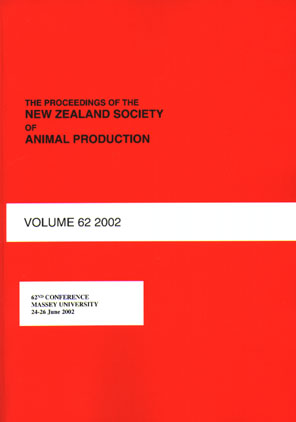Abstract
Efficient sheep farming of the future will demandreduced labour costs, ease of shearing, and minimised susceptibility to flystrike, while modern markets simultaneously demand reduced chemical use and high standards of animal welfare. Sheep witha reduced area of the body covered with fleece may provide a practical solution to these conflicting requirements. Research has shown that it is possible to select sheep for bare faces, legs, belly and breech, and that atleast some of these traits behave as though they are controlled by recessive genes, but that some only becomeevident later in life. Patterns of fleece distribution define major skin domains in the sheep that are evident in other mammals. We hypothesise that discrete skin domains arise because fibroblasts that induce wool follicle development originate from different embryonic tissues and carry with them differing developmental programmes for each follicle type. Identifying genes underlying variation in fleece distribution would allow desirable distributions to be established in sheep of diverse genetic backgrounds. Markers for distribution traits would enable us to introgress appropriate genes into flocks that do not carry them, and to determine early in life which animals might express the traits as adults.
Proceedings of the New Zealand Society of Animal Production, Volume 66, Napier, 113, 2006
| Download Full PDF | BibTEX Citation | Endnote Citation | Search the Proceedings |

This work is licensed under a Creative Commons Attribution-NonCommercial-NoDerivatives 4.0 International License.

